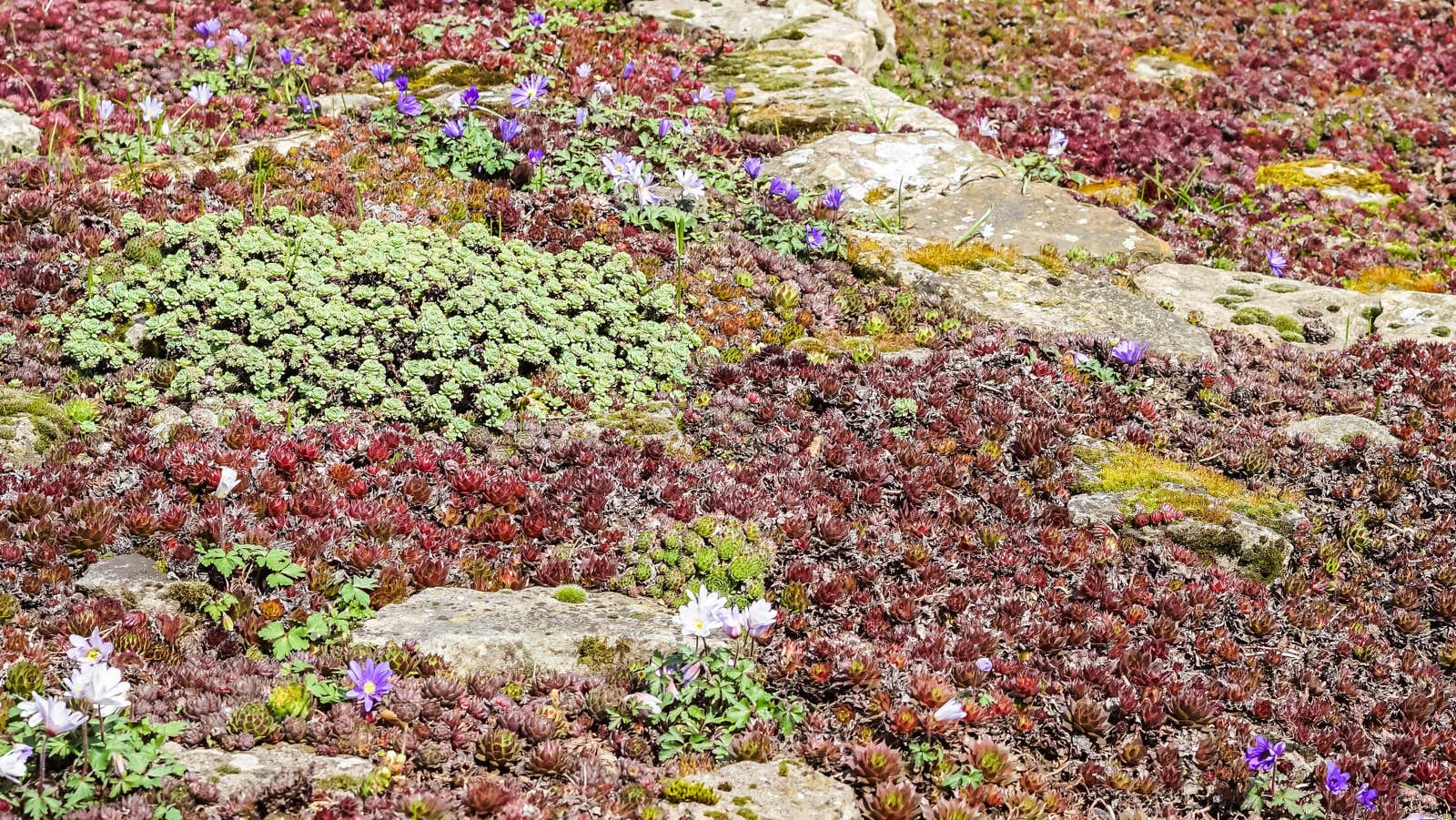How to Plant a Tapestry Lawn (and Why You Should Do It)

After decades of suggesting that the right lawn should be one type of uniformly green and freshly cut grass, people are realizing that there are other (much less labor intensive and more environmentally friendly) options. One of these is the tapestry lawn.
Here’s what you need to know about this landscaping trend and how to plant your own tapestry lawn.
What is tapestry lawn?
Tapestry lawns are a patchwork of low-growing perennial flowering plants that can tolerate shearing. Thus, instead of a traditional lawn of one type of green grass, tapestry lawns are a living collage of flowers and ground cover foliage of different colors and textures.
But this does not mean that tapestry lawns are too delicate: they can still be walked on like a lawn of grass. (Although they are probably not the best option for families with younger, active kids who spend a lot of time playing on the lawn.)
In addition, tapestry lawns are not only more interesting to look at, but also easier to care for – the need for mowing is reduced by two-thirds, and they grow without artificial chemical fertilizers. They also absorb rainfall twice as fast as traditional lawns.
Finally, the diversity of colors in tapestry lawns also gives bees and other native pollinators more room to work and the ability to do their job from early spring to late fall.
How to plant a tapestry lawn
As with any other lawn, the soil must be prepared before planting a tapestry lawn. This means testing it and then making adjustments to make sure it has the right nutrients, pH levels, and physical characteristics (i.e. not too gritty, hard, lumpy, etc.).
You don’t need a specific combination of plants to create a tapestry lawn – just choose those that grow well in your soil conditions and climate. Often these are local species. Some of the most popular groundcovers for tapestry lawns include thyme, chamomile, yarrow, creeping jenny, and white clover.
Make sure your newly planted tapestry lawn is getting enough water, especially in the first two to three weeks. The amount of water you need for watering will depend on how much rainfall occurs during this period, but in general it is recommended to water sprouting tapestry lawn twice a day for 15-20 minutes: once in the early morning and again. in the first half of the day.